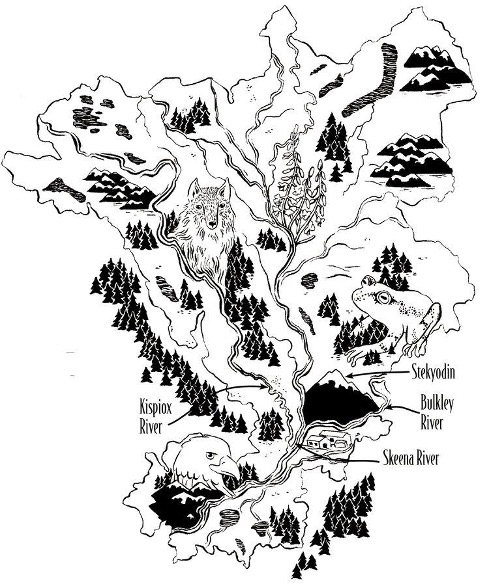Denmark is the world’s largest oil producer to commit to ending oil and gas extraction. In December 2020, a broad majority of parliamentary parties passed a binding law for climate-neutrality by 2050, and the planned phase out of its oil and gas sector is central to meeting these commitments. With more than 55 platforms in 19 oil and gas fields in the North Sea, Denmark has cancelled all future oil and gas extraction tender rounds. As the agreement notes: “if our children and grandchildren are to live in a world that lives up to the common obligations under the Paris Agreement, fossil fuels must be phased out … It’s not a choice we face, it is a bound task” (Nordsøen 2020, 1). A just transition is central to this transformation. Denmark is committed to helping workers transition to new and well-paying jobs and supporting those regions and communities that are most impacted. (Nordsøen 2020).
Context
Denmark, with a population of roughly six million people, is showing global leadership in reducing greenhouse gas emissions and phasing out oil and gas production both at home and abroad. As a member of the European Union (EU), its frameworks for energy and climate policy are influenced by common European objectives. However, its greenhouse gas emissions reduction targets have gone above and beyond those adopted under European Climate Law1. Denmark has committed to reducing its greenhouse gas emissions by 70 per cent by 2030 as opposed to the EU-wide target of 55 per cent. At the international level, Denmark, together with Costa Rica, launched the Beyond Oil & Gas Alliance (BOGA) in 2021, for which signatory governments set an end date for their oil and gas exploration and extraction2. To date, Denmark is the only country with a large oil and gas sector to make such clear phase-out commitments across its entire economy. There has been an effective dialogue between Danish employers, unions, and government since the 1970s on industrial and climate policy and transitioning the power sector from coal to wind. The most recent climate commitments build on that momentum and social solidarity.

The oil and gas sector in Denmark dates back to the oil embargo crisis in the early 1970s. Denmark started producing oil and gas in 1972 and became a net exporter in 1997. Oil production peaked in 2004, and in 2018 Denmark once again became a net oil importer (Sperling et al. 2021). Today, Denmark is a relatively small oil producer with around 0.1 per cent of the global market (Statistical Review of World Energy 2021). In 2020 Denmark produced around 77,000 barrels per day of crude oil equivalent; in the same year the United Kingdom and Norway produced around one million and two million barrels per day, respectively (US EIA 2020). While oil and gas remain important to the Danish economy, over the past 20 years, crude oil production has declined by 41 per cent and natural gas by 57 per cent, while renewable energy production has increased by around 300 per cent (Energistyrelsen 2022). Denmark is presently considering increasing natural gas production in order to reduce its dependence on Russia energy. However, if adopted, this will be a temporary measure.
The declining productivity and economics of its oil and gas reservoirs has accelerated Denmark’s oil and gas transition. Its last oil and gas tender round (the eighth) saw very little interest from energy firms, indicating a lack of long-term viability for the sector (Sperling et al. 2021). Given these conditions, there has been political and industry support for a planned phase out of oil and gas in the Danish North Sea, and government support for investments in CCUS, offshore wind power, and alternatives to fossil fuels. This support has been building for some time. The target to phase out oil and gas by 2050 was announced as early as 2006, and then strengthened with a 100 per cent renewable energy strategy in 2011 under a conservative-led government. The 2020 binding law for climate-neutrality (Danish Climate Act) cements these commitments across a broad political coalition (left and centre-right), providing a degree of policy durability that is uncommon in many other jurisdictions. This robust foundation also sends strong signals to the industry and provides a consistent framework for investment.
In each of these decisions, governments were not acting alone. A coalition of NGO, union and civil society organizations were instrumental in pushing for the phase out of oil. Their collective 2020 campaign “Stop looking for more oil NOW” intensified pressure to end Denmark’s eighth oil and gas tender. Many advocates argued that the planned oil and gas phase out was too far off and needed a shorter timeframe; however, the government assessed that the cost of contractual buyouts was too high.
Phasing out oil and gas activities will have important fiscal and employment implications for the country. Oil and gas extraction in the Danish North Sea generated over C$100 billion in state revenues between 1972 and 2019 (DKK 541 billion). Cancelling future tenders and imposing an oil and gas end-date in 2050 is estimated to cost C$2.45 billion (DKK 13 billion) in foregone government revenue (Energistyrelsen 2022)3. Beyond this, the impact to employment in the oil and gas sector is another major concern. An estimated 10,000 people are directly employed in oil and gas extraction with another 16,000 indirect jobs, representing around one per cent of total Danish employment (Sperling et al. 2021)4. The majority of oil and gas jobs are located in Esbjerg—Denmark’s energy centre on the west coast of the Jutland peninsula in southwest Denmark.
Policy response and transitions management
Denmark’s 2020 climate-neutrality law included a commitment to a just transition initiative in and around the Danish west coast seaport of Esbjerg, where energy industries are concentrated. There is political consensus that the North Sea will remain the key energy producer, but instead of oil and gas, will focus on wind energy and other renewable energy activities. Therefore, Denmark’s just transition is being managed in place; new economic activities are in sectors that require similar skills and expertise as the oil and gas sector. Although the Esbjerg community and surrounding areas are changing their economic orientation, they will retain and strengthen their energy economy, maintaining their identity. The strong growth and proven effectiveness of the renewable energy sector reduces risks for both workers, industry, and the community.
Within this context, Denmark’s approach has focused on securing major investments in sustainable energy research and innovation, and in creating an effective regulatory environment for sustainable energy investments alongside transmission infrastructure for export. Close connections with industry and unions have been at the forefront of this approach. Denmark has both a Ministry of Environment and a Ministry of Climate, Energy, and Supply. Together, they coordinate Denmark’s just transition policies. As part of the Danish climate effort, the government has established 14 climate partnerships with the business community and, in 2019, established a Green Business Forum. Their purpose is to strengthen the dialogue between the government, business, and the trade union movement on opportunities and barriers in the green transition of business (Klima Energi-og Forsyningsministeriet 2022b).
The Ministry of Climate, Energy, and Supply is also involved in North Sea co-operation with 10 European countries to reduce the cost of offshore wind development and to develop a European offshore wind market5. The European Commission has estimated that wind energy from the North Sea will be able to cover up to 12 per cent of the electricity consumption in the EU in 2030 and up to 20 per cent in 2040; it is being called the “Silicon Valley” for offshore wind and could potentially become a power plant for the whole of Europe (Klima Energi-og Forsyningsministeriet 2022a). Danish companies are world leaders in offshore wind, and the wind turbine industry employs more than 31,000 people in Denmark (Klima Energi-og Forsyningsministeriet 2022a). The 2020 gas phase out agreement included a commitment to invest C$17 million (DKK 90 million) by 2025, to support the expansion of the Port of Esbjerg as a hub for large-scale offshore wind. While wind energy sector support is important, Denmark is planning the first offshore wind farms in Europe without subsidies and it is expected to be the cheapest energy source in Europe—surpassed only by onshore wind power (Klima Energi-og Forsyningsministeriet 2022a).
Part of the existing oil and gas offshore workforce are close to retirement and early pensions are being offered as part of the transition. However, new businesses in offshore energy are expected to be the major source of transition employment and growth (Sperling et al. 2021). An influential 2015 assessment of Denmark’s potential to meet 100 per cent of its renewable energy needs by 2050, estimates an additional 50,000 additional jobs per year will be created by 2050 (Vad Mathiesen et al. 2015)6. The analysis finds that “renewable energy systems create more domestic employment compared to the fossil reference, and that the earlier the investments are made, the earlier will the employment effect appear” (Vad Mathiesen et al. 2015). It further notes that innovation and export potential may spur additional economic and employment gains. They have the potential to be the most important long-term contributors to Danish employment with an annual export potential of €20 billion which would generate up to 150,000 jobs by 2050 (Vad Mathiesen et al. 2015)7. More recent assessments by key labour unions echo the economic and employment potential of green energy investments. There has also been strong growth in the renewables-related machinery sector.8
Denmark’s strong social welfare state, with among the lowest income inequality of any OECD country, is also helping to smooth the transition. Their renowned “flexicurity” model makes it easy to hire and fire workers while safeguarding their financial security by providing a robust system of social and employment supports. Active labour market and education policies ensure that individuals have the skills they need to transition to new employment. As one example, the municipally owned port authority, Port Esbjerg, in co-operation with the United Federation of Workers in Denmark is introducing an “Offshore Academy” to support education and training in renewable energy and related industries. Esbjerg’s port is an international, multimodal transport centre, employing around 10,000 people across 200 companies and plays a key role in transition efforts. The municipality is the fifth largest municipality in Denmark with a total population of around 116,000.
Denmark has set out to become a leader in proactively managing the transition for workers by leveraging new opportunities. For example, Denmark’s Prime Minister Mette Frederiksen leads the International Energy Agency’s new global commission on people-centred clean energy transitions. Danish climate, energy, and business ministries all include international engagement and leadership among their priorities. One key effort in this regard is Denmark’s Green Future Fund (est. 2020), which focuses on the development and dissemination of technologies, the conversion of energy systems to renewable energy, storage and efficient use of energy, and the global export of green technology, especially wind energy. The fund has a total capital commitment of C$4.7 billion (DKK 25 billion). Denmark’s approach to decarbonisation is both inward and outward facing—focusing on enhancing the innovation and productivity of domestic industries and sharing expertise abroad, reinforcing its comparative and competitive advantage.
Progress to date
Denmark’s phase out of oil and gas comes alongside ambitious climate objectives. In announcing the phase out, the Danish government has expressed the importance of this being a just transition for workers and communities, most notably in Esbjerg, where oil and gas employment is concentrated. However, in contrast to other countries with such initiatives, the use of the term “just transition” is far less prevalent in public sector reporting and there is no formal just transition process to monitor and report back on implementation. Denmark has a Council on Climate Change—an independent body of experts—that provides suggestions for cost-effective climate policy solutions. But its reports do not specifically address aspects of justice in the transition (see for example, Klimaraadet 2022).

However, Denmark’s robust social systems are helping to strengthen the distributional elements of justice in terms of how costs and benefits are experienced between groups and the nature of compensation mechanisms (Bennett et al. 2019). The idea of just transition is also not new in the Danish context. There are long-standing relationships between government, industry, and unions to proactively manage transitions. Public trust and dialogue strengthen the recognitional and procedural elements of justice in terms of how stakeholders are acknowledged and whether the right processes are in place to plan and manage transitions. There is also a sensitivity to socio-economic disparities and inequalities in policy design. Denmark’s climate change commitments are expected to lead to increased prices on electricity, heating, and transportation because of new taxes and investments. While these are expected to be offset by energy efficiency improvements and renewable energy in the medium and longer terms, the government has established programs to subsidize high energy costs for the country’s poorest households.
Is Denmark achieving its objectives? Employment and investments in renewable energy have grown significantly over two decades and there is little reason to expect this momentum to change. The new Viking Link power cable connection to the U.K. and an extension of the power grid between Holstebro and the Danish-German border further strengthens the wind power economy. Early signals also suggest that Russia’s war in Ukraine is bolstering the European Union’s commitments to renewable energies. The limited pushback to Denmark’s approach to date—based on a broad parliamentary and societal consensus—also reflects a high level of acceptance and buy-in.
Lessons for Canada
Overall, Denmark’s approach has focused on investing in renewable energy and collaborating with industry and unions to spur a new green energy economy. Oil production in the state was already declining and represented a small portion of Danish economic production and about one per cent of the workforce. (This is similar to Canada which also has about one per cent of its workforce in the oil and gas sector.) This context, along with Denmark’s centralised and unitary government structure, created the environment for establishing solid commitments and pan-parliamentary consensus, which in turn provided the market and industry with clear signals to invest in renewable energy. Public sector energy investments and supports are spurring the renewable economy, while Denmark’s growing global leadership is solidifying its expertise in the global low-carbon transition.
A critical component in planning and managing the global low-carbon transition is determining what new opportunities workers and communities can transition toward. For Denmark, the answer has been clear: renewable energies, specifically wind power. In this sense, a few key lessons stand out for Canada:
- Implement regulatory certainty and consistency: Denmark’s multi-party climate commitments make its decarbonisation objectives clear in the short, medium, and longer term. Denmark’s regulatory framework supports this process. This helps to create a strong investment climate for the green economy.
- Build on competitive strengths: Canadian jurisdictions could learn from Denmark by developing a clear vision of comparative strengths and capabilities, investing in those strengths, and communicating those to the world. Global connections and knowledge-sharing are a key part of Denmark’s just transition strategy.
- Engagement and dialogue: The Danish case highlights the importance of dialogue with key stakeholders and Indigenous rights holders. Denmark has a long tradition of engagement between union, industry, and government to manage transitions. This made it easier to establish consensus for the oil and gas phase out among different groups as there are established relationships to manage the transition process.
Conclusion
Denmark’s Minister of the Environment and Climate, Per Bolund, has remarked that “the use of fossil fuels must be a parenthesis in history” (United Nations Regional Information Centre for Western Europe 2021). Denmark’s energy transition is well underway. As a relatively small nation, Denmark is showing outsized leadership to meet that goal. In the Danish case there is a clear picture of what the energy sector is transitioning to. Wind energy investments are a proven winner, and employment in this sector involves many compatible skills to that of oil and gas workers. But beyond this, the robustness of the Danish social welfare state reduces the riskiness and exposure of workers (direct and indirect) to the energy transition. Social and employment supports help reduce injustices in the transition and lessen inequalities.
All opinions, errors, and omissions are the sole responsibility of the author.
References
Bennett, Nathan J. et al. 2019. “Just Transformations to Sustainability.” Sustainability 11(14): 3881. doi:10.3390/su11143881
Energistyrelsen. 2022. “Danish Energy Agency.” The Danish Government. https://ens.dk/en
Klima, Energi-og Forsyningsministeriet. 2022a. “North Seas Energy Cooperation.” The Danish Government. https://kefm.dk/globale-samarbejder/nordsoesamarbejdet
———. 2022b. “Regeringens Klimapartnerskaber.” The Danish Government. https://kefm.dk/klima-og-vejr/regeringens-klimapartnerskaber-og-groent-erhvervsforum
Klimaraadet. 2022. “Statusrapport 2022: Danmarks Nationale Klimamål Og Internationale Forpligtelser.” February 25. https://klimaraadet.dk/sites/default/files/downloads/statusrapport_2022_webpdf_final.pdf
Mathiesen, Ken. 2021. “Olieindustrien Glæder Sig over Aftale Om CO2-Lagring i Nordsøen: Grønt Lys Til Nyt Eventyr Med Flere Tusinde Job.” Jydske Vestkysten. December 15. https://jv.dk/artikel/olieindustrien-glæder-sig-over-aftale-om-co2-lagring-i-nordsøen-grønt-lys-til-nyt-eventyr-med-flere-tusinde-job
Nicolas, Elena Sanchez. 2020. “Denmark to Stop North Sea Oil Drilling in 2050.” EU Observer. December 7. https://euobserver.com/nordic/150287
Nordsøen. 2020. “Aftale Mellem Regeringen (Socialdemokratiet), Venstre, Dansk Folkeparti, Radikale Venstre, Socialistisk Folkeparti Og Det Konservative Folkeparti Om Fremtiden for Olie- Og Gasindvinding i Nordsøen Af 3. December 2020.” https://kefm.dk/Media/0/3/Nordsøaftale.pdf
Sperling, Karl et al. 2021. “Denmark without Oil and Gas Production: Opportunities and Challenges.” Aalborg University: 1-35. https://vbn.aau.dk/en/publications/denmark-without-oil-and-gas-production-opportunities-and-challeng
Statistical Review of World Energy. 2021. “Full Report – Statistical Review of World Energy 2021.” British Petroleum. https://www.bp.com/content/dam/bp/business-sites/en/global/corporate/pdfs/energy-economics/statistical-review/bp-stats-review-2021-full-report.pdf
United Nations Regional Information Centre for Western Europe. 2021. “Denmark, Sweden and Greenland in a new global alliance to seek an end to oil and gas production.” November 12. https://unric.org/en/denmark-sweden-and-greenland-in-a-new-global-alliance-to-seek-an-end-to-oil-and-gas-production/ Vad Mathiesen, Brian et al. 2015. “Aalborg Universitet IDA’s Energy Vision 2050 A Smart Energy System Strategy for 100% Renewable Denmark.” Aalborg University: 1-159. https://vbn.aau.dk/en/publications/idas-energy-vision-2050-a-smart-energy-system-strategy-for-100-re
1 In June 2021, the EU adopted a European Climate Law, establishing the aim of reaching net zero greenhouse gas emissions in the EU by 2050. The law sets an intermediate target of reducing greenhouse gas emissions by at least 55 per cent by 2030 compared to 1990 levels.
2 The alliance, which was presented at COP26, also includes Sweden and Greenland from the Nordic countries, as well as France, Ireland, Quebec, and Wales.
3 On the estimate of daily production averaging 83,000 barrels of crude oil and 21,000 barrels of oil equivalent in 2020 (Energistyrelsen 2022).
4 Note that these figures are from Oil & Gas Denmark, the branch organisation for the Danish upstream gas and oil sector and have been contested by NGOs who believe that the employment figures are in fact smaller (Sperling et al. 2021).
5 The North Sea Cooperation is a cooperation on offshore wind and electricity networks in the North Sea between Belgium, the Netherlands, Luxembourg, Ireland, the United Kingdom, France, Norway, Sweden, Germany, and Denmark with the participation of the European Commission.
6 This is based on an assessment of the implementation of the IDA Energy Vision 2050. This contribution is the net-effect compared to the fossil reference (Vad Mathiesen et al. 2015)
7 Assuming an import share of 50 per cent (see Vad Mathiesen et al. 2015 for reference scenario).
8 See for example, analysis from the trade union Dansk Metal which anticipates an estimated 3,000 new jobs related to CCUS in the Esbjerg area in the near future (Mathiesen 2021).




































